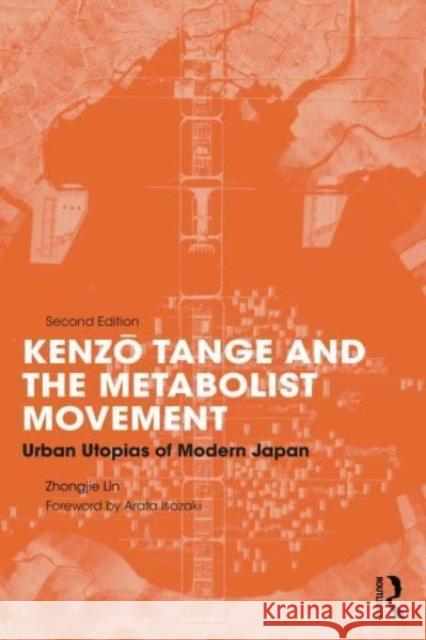Kenzo Tange and the Metabolist Movement: Urban Utopias of Modern Japan » książka
Kenzo Tange and the Metabolist Movement: Urban Utopias of Modern Japan
ISBN-13: 9781032149424 / Angielski
Kenzo Tange and the Metabolist Movement: Urban Utopias of Modern Japan
ISBN-13: 9781032149424 / Angielski
(netto: 666,90 VAT: 5%)
Najniższa cena z 30 dni: 680,04 zł
ok. 16-18 dni roboczych.
Darmowa dostawa!
This new edition expands Zhongjie Lin’s pathbreaking account on Tange and Metabolism centered at the intersection of urbanism and utopianism. The thorough historical survey leads to a definition of three Metabolist urban paradigms which continue to inspire experiments in architecture, city design, and conservation.
Amid Japan’s political turbulence in 1960, seven architects and designers founded Metabolism to propagate radical ideas of urbanism. Kenzō Tange’s Plan for Tokyo 1960 further celebrated urban expansion as organic processes and pushed city design to an unprecedented scale. Metabolists’ visionary schemes of future cities gave birth to revolutionary design paradigms, which reinvented the discourse of modern Japanese architecture and propelled it through the years of Economic Miracle to a global prominence. Their utopian concepts, which often envisaged the sea and the sky as human habitats of the future, reflected fundamental issues of cultural transformation and addressed environmental crises of the post-industrial society.
This new edition expands Zhongjie Lin’s pathbreaking account on Tange and Metabolism centered at the intersection of urbanism and utopianism. The thorough historical survey, from Metabolism’s inauguration at the 1960 World Design Conference to the apex of the movement at Expo ’70 and further to the demolition of Nakagin Capsule Tower, leads to a definition of three Metabolist urban paradigms—megastructure, group form, and ruins—which continue to inspire experiments in architecture, city design, and conservation.
Kenzō Tange and the Metabolist Movement is a key book for architectural and urban historians, architects and all those interested in avant-garde design and Japanese architecture.










